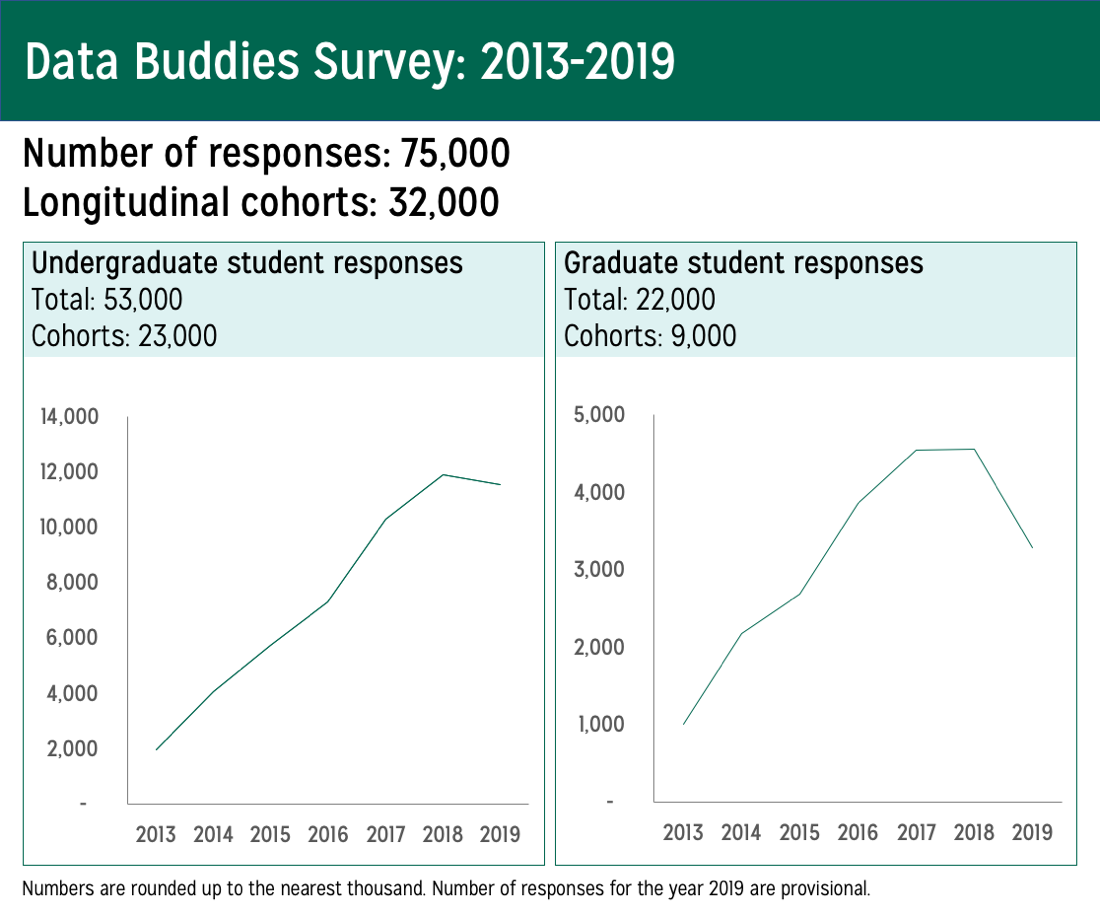Data Buddies Survey Collected 75,000 Responses Over the Past Seven Years

The CRA Data Buddies Survey (DBS), managed by the CRA Center for Evaluating the Research Pipeline (CERP), is a rich data source providing important information to the community on the state of computing in higher education from the students’ perspective. Undergraduate and graduate students in computing-related degree programs across the United States and Canada have been recruited by participating Data Buddy departments since 2013, after two years of piloting. In 2014, CERP added a longitudinal component to its data collection efforts and started recruiting cohorts of students who take the DBS to follow-up with them in an annual basis.
The 2019 DBS survey came to a close at the beginning of February 2020, concluding CERP’s seventh year of data collection for DBS. This graphic provides an overview of the amount of data collected over these seven years. The survey collected approximately 75,000 total responses, and 32,000 of these respondents are part of CERP’s longitudinal cohorts.
Participating departments gain insight into their students’ experiences in their computing degree programs at their institutions compared to students at similar institutions. Departments are also able to track their departments’ progress over time through customized department reports that they receive every spring. Visit https://cra.org/cerp/data-buddies/ to find out more about the Data Buddies project, view sample department reports, and sign-up to become a data buddy.
 This analysis is brought to you by the CRA’s Center for Evaluating the Research Pipeline (CERP). CERP provides social science research and comparative evaluation for the computing community. Subscribe to the CERP newsletter here. Volunteer for Data Buddies by signing-up here.
This analysis is brought to you by the CRA’s Center for Evaluating the Research Pipeline (CERP). CERP provides social science research and comparative evaluation for the computing community. Subscribe to the CERP newsletter here. Volunteer for Data Buddies by signing-up here.
This material is based upon work supported by the National Science Foundation under grant numbers CNS-1246649, DUE-1431112, and/or DUE-1821136. Any opinions, findings, and conclusions or recommendations expressed in this material are those of the author(s) and do not necessarily reflect the views of the National Science Foundation.









